
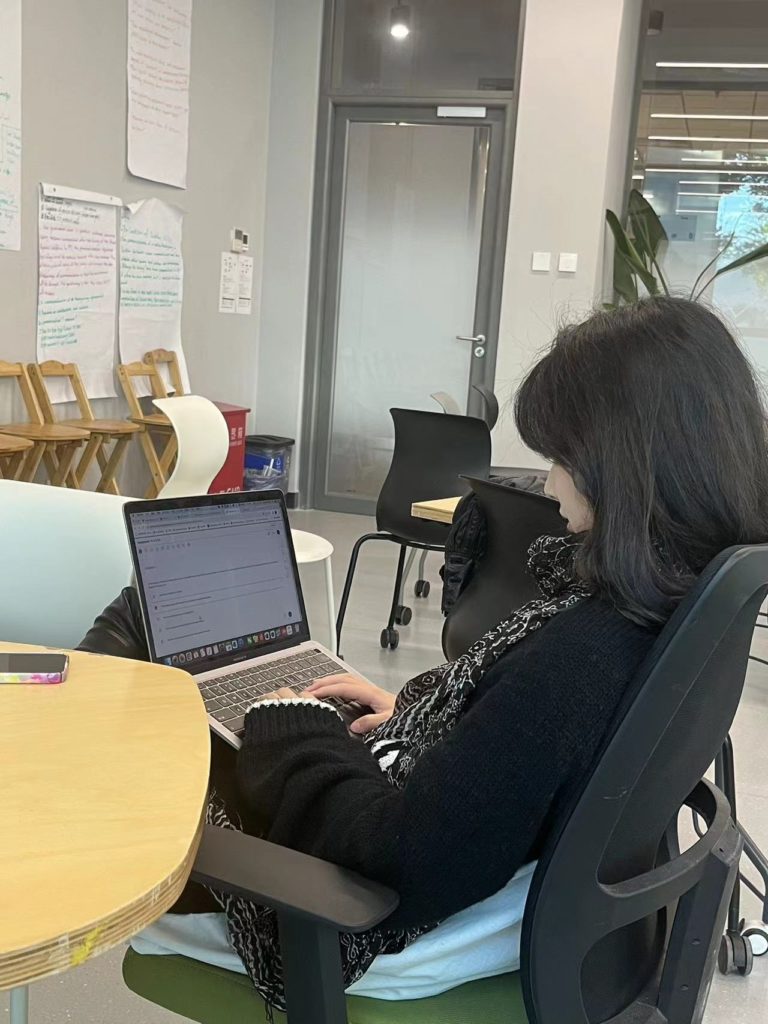

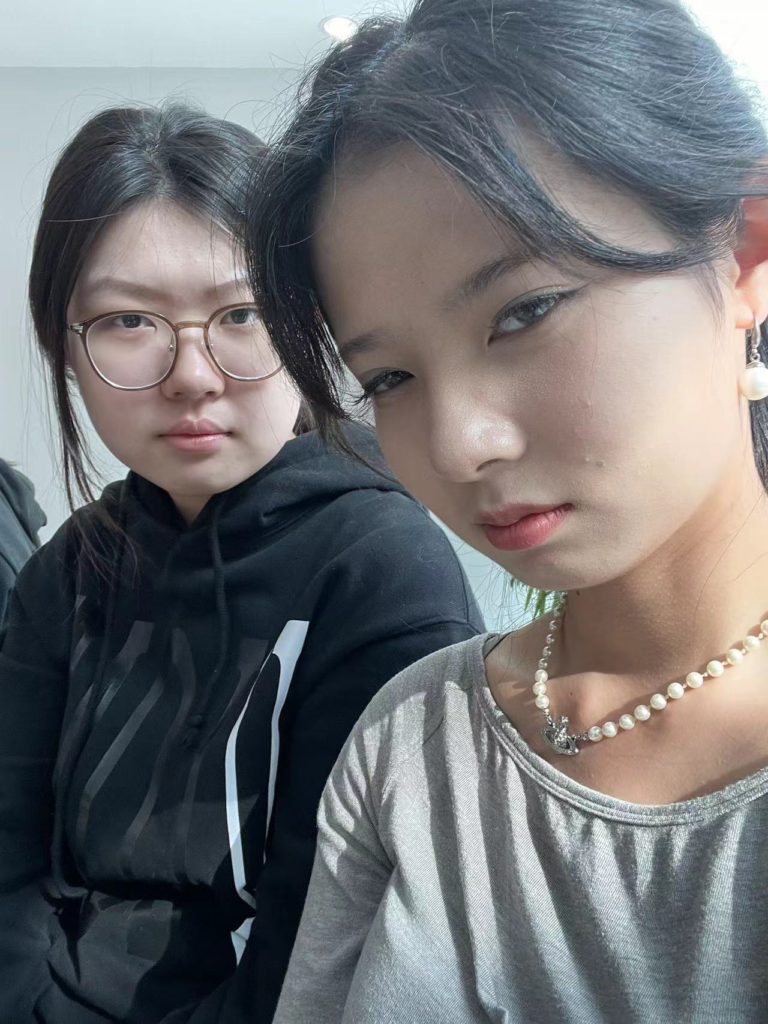
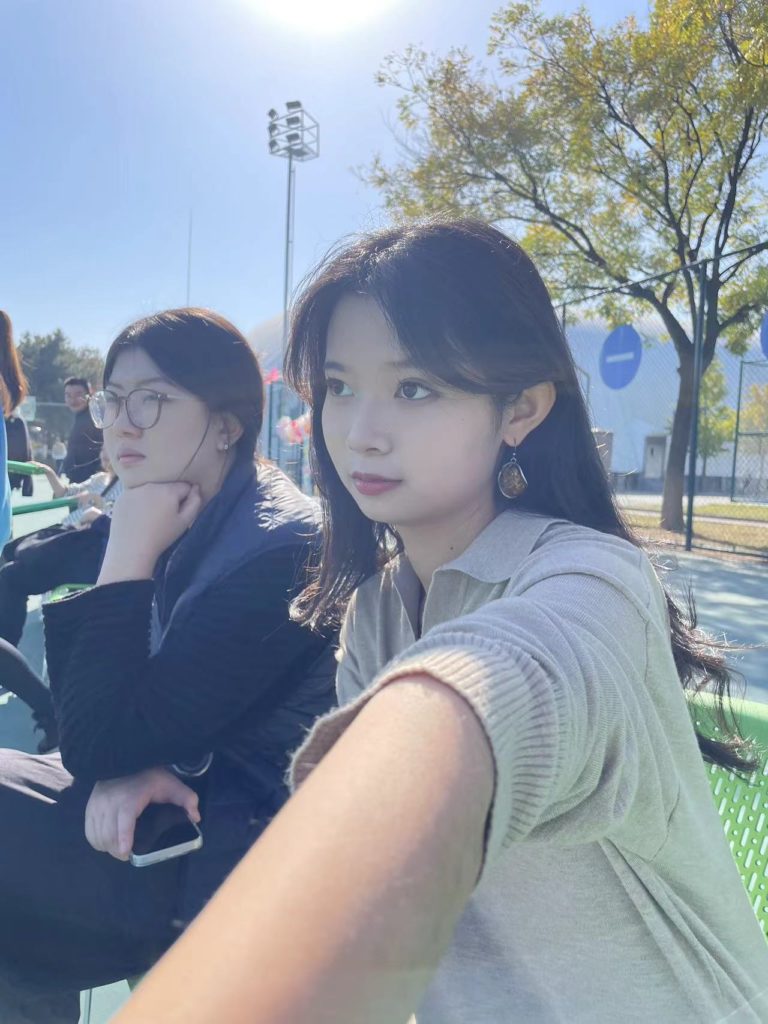
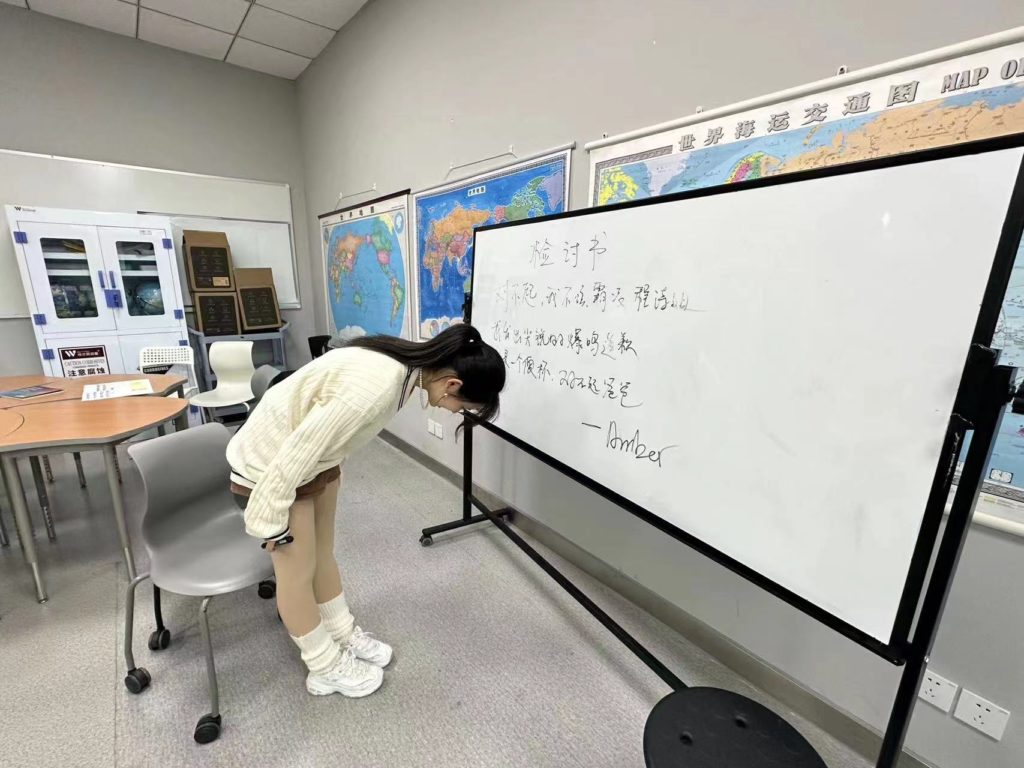

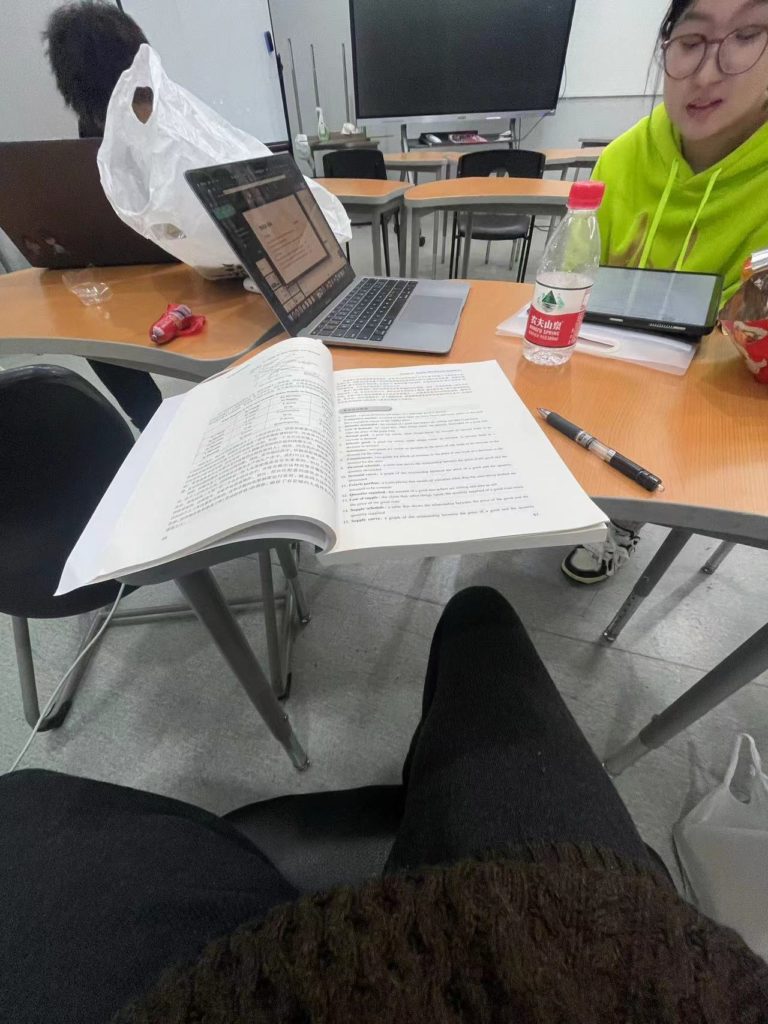

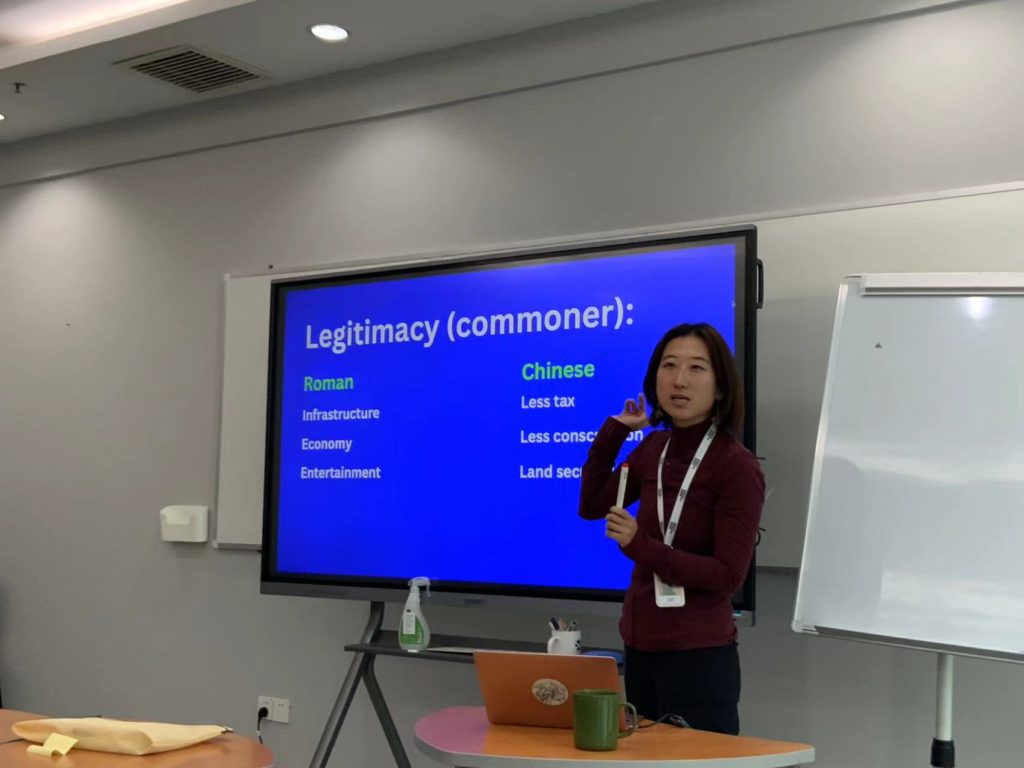

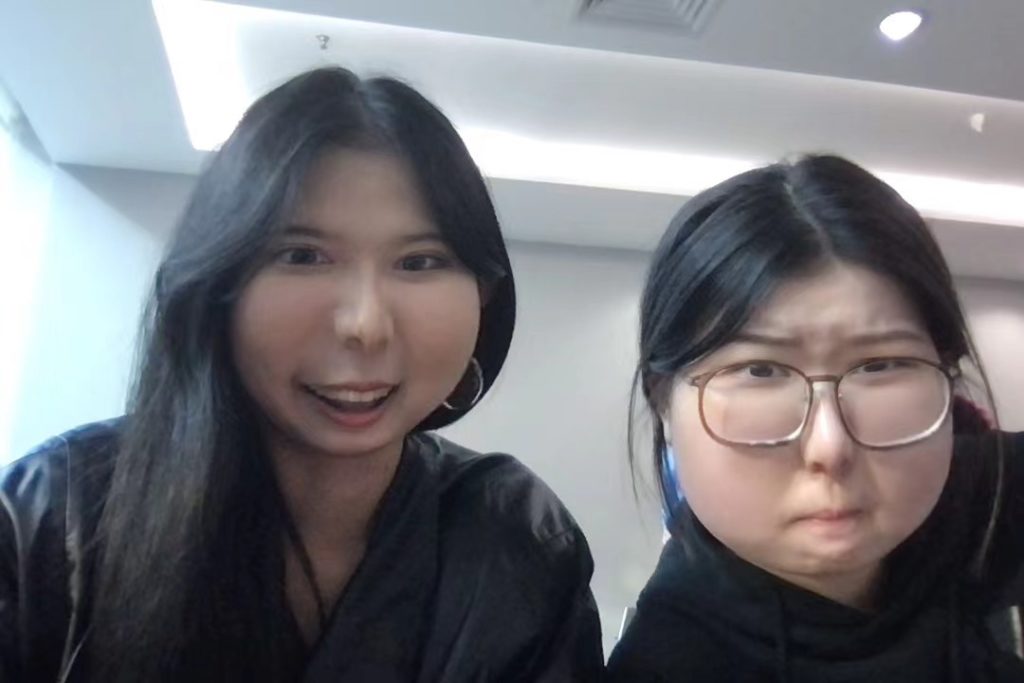
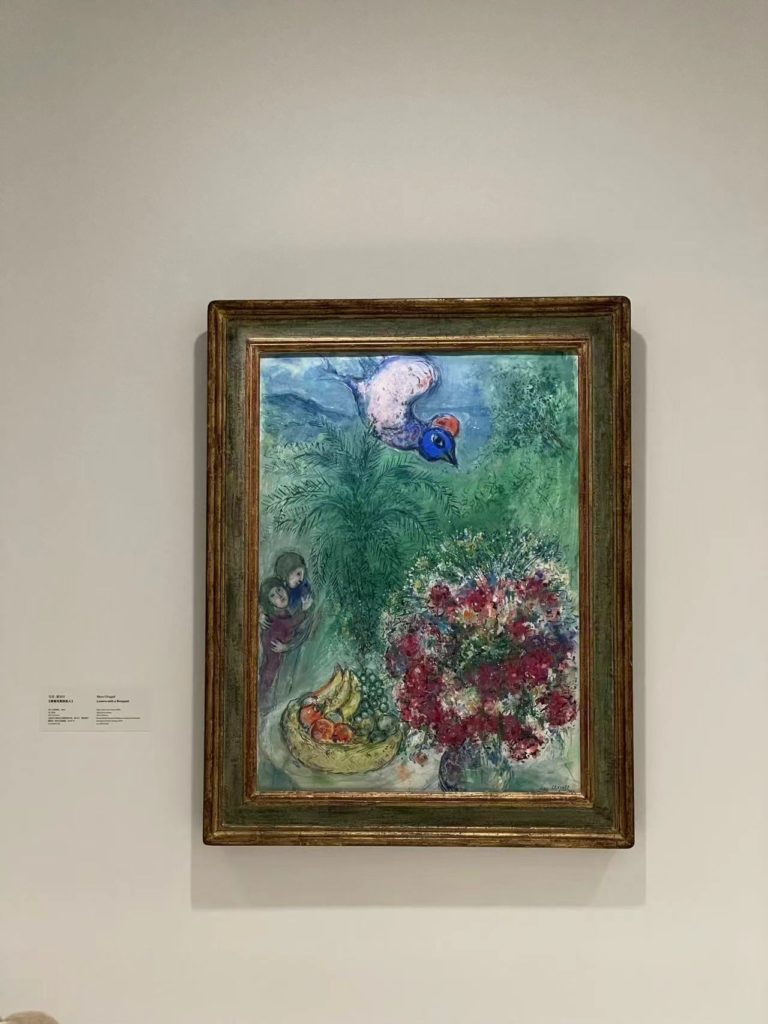
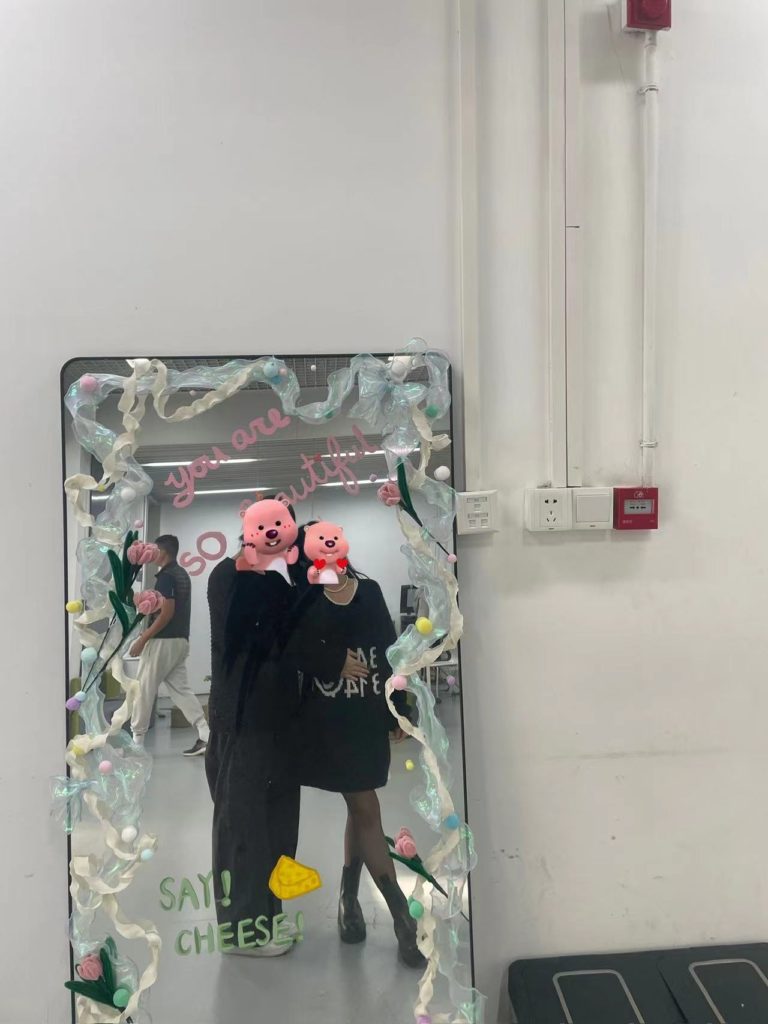
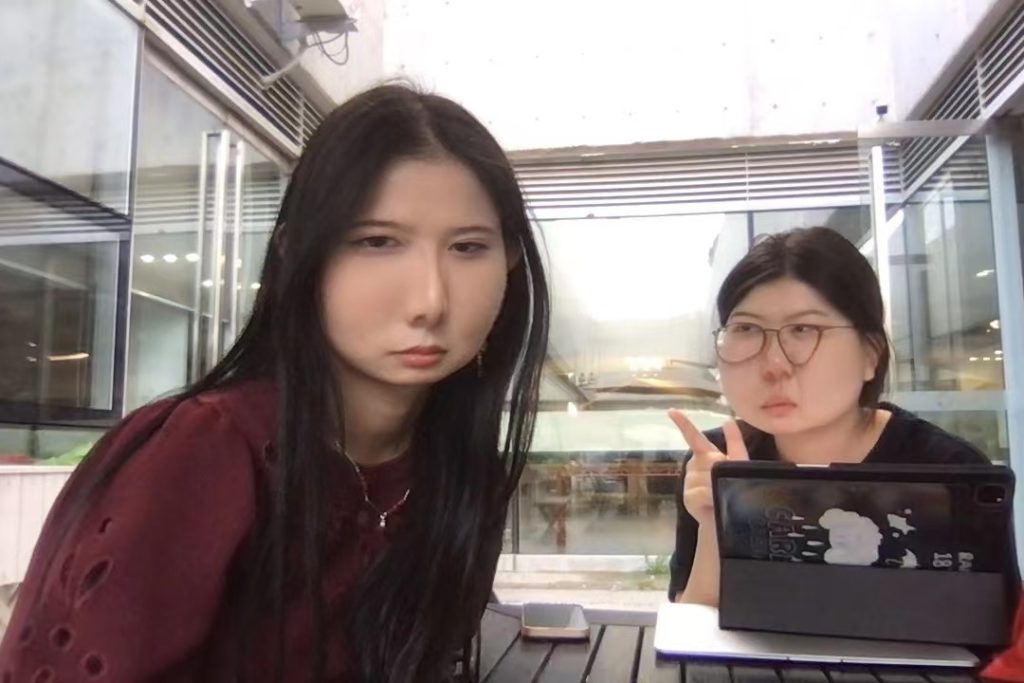

ONE IS NOT BORN, BUT RATHER BECOMES, A WOMAN















World history-Unit2-Empires
Compare and contrast essay of Rome and China
The word empire has been considered a very powerful and large-scale civilization that is not very common in history. However, there are two great civilizations, Rome and China, that can reach the standard of the empire due to the fact of their achievements for human development. The essay will analyze two empires through the perspectives of administration, legitimizing strategies, and foreign relations. It will discuss the similarities and differences to help understand the greatness of the two empires.
Rome and China had basic differences in national administration. Rome is more focused on individual rights, leading to their initial republic structure.To elaborate, Rome set up two administrators of the empire to share the rights, preventing authoritarianism. There is another organization called the Senate made up of nobles to incorporate with administrators. Roman citizens, except slaves and women, had the right of vote in public affairs. Although officials could suggest laws and make decisions, they needed citizen assemblies to approve and turn their ideas into actual laws. These assemblies also address criminal trials. Over time, after Caesar was assassinated, Augustus became the Roman Emperor, marking the end of the republic and the start of the principate. The emperor’s power was from two factors, finance and the military. By the third century, the emperor’s appointments largely relied on military power and allowed non-Romans citizens to qualify to become emperors. This led to a bloody power struggle for the emperor’s appointment. However, despite there are changes over time, the commitment to citizen rights and legal processes still remained at principle level. Compared to Rome’s alter in administration structure, for over two thousand years, rulers, elites, and common people in China think it is a political unit correctly governed by a single central leadership. The Chinese empire started with the unification of the Qin. The Qin’s success was due to their strategy to strengthen central control and take strict measures to prevent division again. The empire was divided into command areas and counties, all governed by centrally appointed officials who could be recalled anytime. Three different officials were a governor, a military commander, and a royal inspector. Although the Qin was soon replaced by the Han, this management system has been continued and improved. China established a complete bureaucratic system. This is built through exams, people were selected and appointed. This differed from Rome, which relied more on military strength and aristocracy support, China’s vast bureaucracy all answered to the central government, centered around the emperor, similar to Rome’s later principate.
Both empires had many strategies to legitimize and strengthen their rule. This means a series of actions and policies to offer authority or fairness to the empire’s policies, further supporting the government. For Romans, a key point was their citizenship. Being a citizen was closely related to their culture which was seen as an honor. It gave legal rights, like voting and fair trials, and was also a sign of social status. People from countries conquered by Rome began to desire the equal rights that Roman citizenship offered, strengthening the empire’s unity. Additionally, the stability of the Roman Empire relied on the elite. This group of people and noble families are the ones who mainly benefit from their laws. These groups controlled most of the empire’s economy and power. For example, only nobles could hold certain high positions, and some laws particularly protected their economic and social interests. Their advantage in the empire can be attributed to their military power. The military was the foundation of the Roman Empire, which constantly expanded through wars, and the spirit of military glory was deeply rooted in Roman history. As mentioned in a previous example, if the military was strong enough, it could even decide the faith of the emperor. Military power was also vital in China and was linked to another key element of foundation: the value of land. Shang Yang, a strategist of the Qin, strengthened Qin’s control over resources and people’s loyalty by legally giving farmers land rights, including buying and selling land. It gave land to farmers, and in return, farmers paid taxes and served in the army. Standardized land plots helped align the army with the families supporting them, gaining the loyalty and obedience of both soldiers and their families. All social status depended on military performance, and military ranks could legally be used to reduce punishment for crimes. Also, in China, the emperor was seen as the Son of Heaven. So, the emperor’s legitimacy was based not only on his lineage but also on his position in moral social order. Chinese philosopher Confucius proposed “Let the ruler be a ruler and the subject a subject; let the father be a father and the son a son”. This idea constantly convinced the Chinese public, reinforcing the emperor’s supreme authority, similar to Roman humanism, providing a framework for elite education and ideal behavior. This ideological influence can also be seen as a political instrument, making people believe all government decisions are reasonable, further strengthening the central government’s power. The Qin have also made many policies for unification. For example, Qin issued a new imperial currency, used uniform weights and measures, and even standardized the width of axles.
When discussing the foreign relations of the two empires, Rome’s diplomatic targets were relatively diverse, as they continued to conquer new countries and cultures. This is, again, back to Rome’s strong military power. After victories, their attitude towards other nations was actually friendly. Rome allowed other nations to keep their original cultures and religions, but they also spread their own culture. Furthermore, with widespread elite education in Rome, they valued promises. For example, Cicero insisted that “an oath to an enemy nation must be honored, but not a promise of ransom to a pirate, who is not a lawful enemy, but… the common enemy of all the world, and with a pirate there is no common basis for either faith or words.” This shows that while Romans had absolute military advantages, they respected and accepted other nations and cultures. However, China’s diplomacy target was relatively less, as it was always fighting its main rival, the Xiongnu. Xiongnu is a very powerful opponent due to its strong military background. So, they developed various methods to cope. China’s diplomatic approach with the Xiongnu was multifaceted, encompassing economic, political, and military measures. Firstly, an equal state relationship was established between China and the Xiongnu, as evidenced by the treaty in 162 BC, where the Xiongnu ruled the regions north of the Great Wall, while the Han Empire governed the territories to the south. Moreover, to fortify ties with the Xiongnu, the Han dynasty employed marriage alliances, such as giving a Han princess in marriage to the chanyu of the Xiongnu. However, when diplomatic measures fell short of ensuring peace, the Han didn’t hesitate to resort to military actions. For instance, Emperor Wu of Han, aiming to bypass the Xiongnu, once launched campaigns into Central Asia, successfully conquering Ferghana in 101 BC. As the Xiongnu began to fragment, leaders of their subordinate tribes renegotiated relationships with the Han, receiving official honors for their allegiance. Xiongnu nobles solidified their loyalty by presenting tributes to the Han Empire, offering commodities like horses and armor, and sending hostages to the Chinese court. In return, they were lavished with gifts such as silk, gold, rice, and money. This shows that China is prudent and wise in diplomacy, and they do not rely too much on war or make concessions to Xiongnu all the time. If Rome is the leader of a continent, constantly pioneering and assimilating, then China is a shrewd businessman, constantly trading with others while maximizing its own interests.
In conclusion, even though there are many differences between the two empires each point based on different philosophies of ruling, cultural background, and other factors, similarities can prove their success is not a coincidence. Both empires show their intelligence is marvelous in their experience of facing challenges. Their legacies continue to shape the world’s understanding of empire-building and governance.
Why higher education should not be free
AP Seminar
2023
Word Count: 1425
Introduction
As higher education in the United States is one of the best education systems in the world, tuition and fees have also gradually increased over time. College tuition and fees have far surpassed house prices as well as average hourly wages for the average American family, it have risen 12 times over the 1978 consumer price index (Li, 2013). Thus, some have claimed higher education should be free for everyone in order to alleviate the burden. However, this idea is impractical after the analysis of perspectives from different stakeholders, which are students, faculty, the education system, and the labor market. This article will mainly focus on how tuition waivers have a negative impact on every stakeholder, to illustrate step by step why higher education should not be free focus in the United States.
Students—The impact on lower-class Communities from Free higher education
Firstly, offering free higher education might inadvertently exacerbate the disadvantages of lower socio-economic groups. This is due to social inequality and increased competition. In order to explain the concept, John Brennan and Rajani Naidoo (2008) highlighted “it is pointed out that in most countries recent increases in higher education participation rates among young people from lower socio-economic groups have been less than the overall rate of increase. ” It can be inferred that despite variations in student backgrounds and demographics, the upper classes will always find some ways to maintain their privilege such as hiring a private consultant for college applications or having access to more insider information. In agreement with the above, Gale and Tranter further illustrate the idea related to student’s background through an example, “Young people from the affluent eastern suburbs of Adelaide (Burnside) were up to seven times more likely to attend university than those from the outer northern suburbs (Elizabeth).’’ It demonstrates education is determined very much by where one lives and where one goes to school. These articles all indicate that the distribution of educational resources is uneven and that the current higher education system already has many inequality problems. Under these circumstances, once free higher education applied, without the previous financial barriers, the surge in applicants will lead to much severe competition. The upper-class people can use their resources to deal with it as usual, but as a result, the minority or lower-class students, who are already at a disadvantage, will be even more marginalized. This idea agrees with Borgonovi and Marconi who claim that “The high level of inequality in access to and completion of higher education among socio-demographically disadvantaged groups may be due to the fact that these groups do not benefit from the expansion of educational opportunities to the same extent as the socio-economically advantaged.” For example, Due to the number of applicants increasing, schools may more emphasis on other factors beyond standard tests to evaluate student’s capability, such as extracurricular activities or letters of recommendation, which may disadvantage low-income students who don’t have the resources to participate in these activities or obtain strong letters of recommendation. Therefore, the consequences of free higher education will be adverse to many students.
Faculty and education system—Overall education quality decline
Free higher education will cause a standard decline of college professors and influence the general education quality. Recent research has shown The introduction of free college led to a decline in the probability of top-performing students applying to a teaching degree as their top choice by about 17.8%. This behavior supports the hypothesis that free college reduces the appeal of pursuing a teaching degree compared to other disciplines (Castro-Zarzur, Espinoza, & Sarzosa, 2019). They mentioned, “We find that the reform reduced the academic qualifications of the pool of students entering the teaching programs, which can negatively affect long-term teacher quality”. To be more specific, when the top students who are capable in all areas are not choosing to work as educators, the quality of the professors in the free higher education system tends to decline. The capability gap might not be directly shown by academics. For example, this group of professors might lack in student caring, student-professor interaction, and so on. However, Student-faculty interaction enhances student engagement, career confidence, perceived job readiness, and satisfaction with educational institutions. (Sabina Chhetri and Rojan Baniya). Also, Opper’s research has implied Teachers matter more to student achievement than any other aspect of schooling, So it’s an absolute strike against the student’s performance. As a result, with the loss of these important factors, students will receive less enhancement in higher education. This means that not only will the quality of the teaching profession degrade under the tuition fee waiver policy, but the overall quality in higher education will decline.
The funding shortage brought by tuition waivers will cause innovation in the education process to decline. Beyond the public universities that are mostly supported by the state government, there are thousands of private institutions in the US about 69% of all universities (U.S. Department of Education, National Center for Education Statistics, 2020). The funding system behind it, as Ward, Pisacreta, Weintraut, and Kurzweil highlighted, “private nonprofits and for-profits receive 31 and 94 percent, respectively.” Student’s tuition is the most important source of funding. Once the free higher education policies are applied, these private universities will face the collapse of the financial chain. Even though the government is willing to provide some help, but fact, State funding for higher education is expected to decrease further due to the economic impact of COVID-19 (Ward, Pisacreta, Weintraut, & Kurzweil, 2020). Under this circumstance, to keep the operation of universities, they will automatically give up some expenditures without high payback. For instance, In the case of innovative experiments and student-directed research originally fostered by the university, the university may have to suspend these programs without current predictable positive outcomes due to lack of funds. This example indicates the potential consequence of free higher education, which is the recession of creativity in college education. Without a stable income from tuition and fees, the private universities’ educational standards will deteriorate, which will punch the overall US higher education. Moreover, it can lead to the overall scientific, technological, and cultural development of human society being influenced badly.
Labor market—Disruption of balance in the workplace
While there is some voice support that free higher education proposal is an incentive for the future workplace. Indeed, in some cases, since lots of people won’t be interrupted by the cost of higher education, they might get better educational resources and reveal their future success in jobs. Companies also have more chances to recruit because the potential employer’s group is enlarged. However, free higher education will disrupt the current workplace balance. As mentioned in the previous paragraph, the population of college students will largely increase without the threshold of tuition. This assertion has been already proved in the past of Chinese higher education expansion as the real precedent. While the economy rising, it appears the surge in enrollments, with four-year undergraduate enrollments jumping from 936,690 in 1999 to 3,261,081 in 2009, further underscores the potential for oversaturation in certain job markets (Yang, 2018). Hence, post-college unemployment emerging as a pressing issue. Although the two countries have different structures and backgrounds, an array of consequences of rapid expansion can still be a reference when considering US higher education. The sudden expansion will break the original balance and condition of the labor market. This not only means no adequate jobs offered for graduates, but also the expansion of higher education might lead to a devaluation of vocational training(Lewis, 1998). It will lack of people to do those jobs that don’t require a bachelor or higher degree, such as electrician, or plumber. Because the number of people who choose to attend vocational education has decreased, people are all pursuing for four-year bachelor’s degree. Undoubtedly, this will have a great impact on the whole workplace in the society. The breakdown in the labor market can result to the suppression of people’s overall incomes, which further proves the bad influence of free higher education.
Conclusion
Free tuition in higher education is an enticing proposition. Yet, as explored, it will harm the rights of lower socio-economic groups. The potential decline in educational quality and the strain on resources are concerning. Additionally, the broader socio-economic impacts, especially on the labor market and vocational training, cannot be ignored. While the goal of free higher education is noble, its potential drawbacks make this proposal impractical, let alone to be implemented.Work Cited
Li, H. “The Rising Cost of Higher Education: A Supply & Demand Analysis.” Leonard N. Stern School of Business, New York University, 2013.
Ward, J. D., Pisacreta, E. D., Weintraut, B., & Kurzweil, M. “An Overview of State Higher Education Funding Approaches: Lessons and Recommendations.” Ithaka S+R, 2020.
U.S. Department of Education, National Center for Education Statistics. “The Condition of Education 2020.” NCES 2020-144, 2020. https://nces.ed.gov/pubs2020/2020144.pdf.
Chhetri, S. B., & Baniya, R. “Influence of student-faculty interaction on graduate outcomes of undergraduate management students: The mediating role of behavioral, emotional and cognitive engagement.” Published Date, 2022.
Yang, L. “Higher education expansion and post-college unemployment: Understanding the roles of fields of study in China.” International Journal of Educational Development, 2018.
Castro-Zarzur, R., Espinoza, R., & Sarzosa, M. “Unintended Consequences of Free College: Self- Selection into the Teaching Profession.” Purdue University, 2019.
Brennan, J., & Naidoo, R. “Higher Education and the Achievement (And/or Prevention) of Equity and Social Justice.” Higher Education, vol. 56, no. 3, 2008, pp. 287–302.
Opper, I. M. “Teachers matter.” Rand, n.d.
Gale, T., & Tranter, D. “Social justice as a matter of policy: Higher education for the masses.” Social inclusion and higher education. Bristol University Press; Policy Press, n.d.
Lewis, T. “Vocational Education as General Education.” Curriculum Inquiry, vol. 28, no. 3, 1998, pp. 283-309.
Borgonovi, F. & Marconi, G. “Inequality in Higher Education: Why Did Expanding Access Not Reduce Skill Inequality?.” Open Education Studies, vol. 2, no. 1, 2020, pp. 312-343.
THE WESTERN FEMINISM ASSERTION ON VEILING OPPRESSION AND CLARIFICATION FROM ISLAMIC PERSPECTIVES
The Western feminism assertion on veiling oppression and clarification from Islamic perspectives
AP Seminar
2023
Word Count: 1290THE WESTERN FEMINISM ASSERTION ON VEILING OPPRESSION AND CLARIFICATION FROM ISLAMIC PERSPECTIVES
Introduction
The veil has long been the subject of debate and scrutiny in the West. Although it has positive and profound meaning for religiously, according to Syed Zamanat Abbas who works as an associate professor at Prince Sattam Bin Abdulaziz University in 2023’s study, Western feminists tend to view it as a sign of oppression. This paper will analyze these conflicting ideas from both positions, including the condemnation of oppression from Western feminism and Muslim clarification, containing a broader discussion around women’s autonomy, socialization, the patriarchy and Orientalism.
Women autonomy
Western feminism has condemned the veil invading women’s self-autonomy. More specifically, as Claire K. Alexander from Gettysburg College in the research based on anthropology, “the Islamic veil has commonly been perceived as disempowering and oppressive” (Alexander 2016), suggesting it compels women to cover themselves and lose the right to control their own bodies. They not only believe it is a subservience behavior but also believe women itself are lack of motivation to be veiled. Just like Karina Jougla (2014), Columbia College alumni who got King’s Crown Leadership Excellence Award – Civic Responsibility indicated, many Western feminists claim that “Women who do choose to veil are either submitting to oppression or do not have valid reasons for veiling to begin with”. This is due to covering one’s body is the exact opposite of the Western philosophy, they prefer to equate freedom with visibility.
However, the covering has a completely difference positive intention in Islamic culture. This idea has been illustrated with the explanation of Islamic doctrine. In the journal article Hijab (Veil): Protection for Woman (Islamic Perspective) written in 2017 by Dr Arshad Munir in the Department THE WESTERN FEMINISM ASSERTION ON VEILING OPPRESSION AND CLARIFICATION FROM ISLAMIC PERSPECTIVES
of Islamic Studies Shaheed Benazir Bhutto Women University, and his associate Dr. Naseem Akhter. They have mentioned that “the Arabic word ‘Hijab’ is considered as the identity of Muslim Women. It represents the act of obedience to Allah and declares a step forward towards freedom” (Munir&Nassem, 2017). For Muslims, it symbolizes a conscious choice of liberation, and are making a statement about their autonomy, asserting their religious identity, and expressing freedom to practice their faith openly and proudly. Therefore, veiling is not purposed to deprive the right of women’s body control.Furthermore, in the Journal Islam’s (In)compatibility with the West?: Dress Code Restrictions in the Age of Feminism published in 2018. Lisa M. La Fornara from Indiana University Maurer School of Law has demonstrated veiling restrictions are not strictly required, but dictated by personal choice. Muslim believers present that traditional Islamic dress is a form of religious expression rather than religious obligation, refuting the idea proposed by Western feminism.
Socialization
Western feminism declaimed that the veil hinders the socialization of Islamic women as implying that women are not appropriate to enter public. The Moroccan feminist writer and sociologist, Fatima Mernissi, renowned for her work on women’s rights within Islam asserts the “veil refers to a particular spatial dimension and indicates an assigned private space for women, a space that should not be trespassed.” (Mernissi,1991). Analyzing in-depth, the veil symbolizes restriction and confinement, implying that women are discouraged from venturing into public spaces. Such a restricted implication has also been criticized by Karina Jougla (2014). She believes wearing the veil in certain cultures hints that women are seen as inferior in social interaction. The THE WESTERN FEMINISM ASSERTION ON VEILING OPPRESSION AND CLARIFICATION FROM ISLAMIC PERSPECTIVES
difference in appearance when wearing a veil and the act of covering oneself in public reinforces the sense of boundaries, distancing women from engaging in society.
Conversely, in Islamic culture, the veil is assisting for women to access public areas. First, Bahar Davary from Indiana University Press, published Miss Elsa and the Veil: Honor, Shame, and Identity Negotiations in 2009 states that “Veiling can bestow honor upon not only the woman but also her family, her community, and the society in which she lives.” This view emphasizes the positivity of the veil for women. Highlighting by wearing the veil, Muslim women not only follow religious dogma but also enhance their dignity and recognition in social interactions. In agreement with Bahar Davary (2009), Randa Abdel-Fattah, an Australian author, lawyer, and human rights activist of Palestinian and Egyptian descent concluded in 2022, concludes the veil imparts a sense of empowerment to Muslim women which makes it more comfortable and respectful for women to enter social life in their cultural environment, and therefore, motivates socialization.
Patriarchy and Orientalism
Western feminism also alleges veiling as the symbolization of patriarchy which leads women’s status to become subordinate. The professor of sociology Marnia Lazreg at Hunter College, is known for her critical analysis of feminism. She sheds light on the manipulative tactics used by men to maintain control over Muslim women. “To against the threat that empowering women posed to men’s dominant place in the social order. In some countries such as Afghanistan, the veil was reinstituted and made compulsory.” (Lazreg, 2011). It reminds people that such rules are artificially made by men, instead of God. It stands as a stark representation of the entrenched gender disparities that women are constantly positioned beneath the male gaze, both literally and THE WESTERN FEMINISM ASSERTION ON VEILING OPPRESSION AND CLARIFICATION FROM ISLAMIC PERSPECTIVES
metaphorically. Through men’s purposely controlling veiling already deviated from religious meaning and underscores the patriarchal structures. Building on this, the scholar from the Department of English at Integral University, Fatami Shahrish, further points out that Islam men “enchainment in the name of security” (Shahrish,2016). This “security” is often a facade, masking the true intentions of patriarchal control. By labeling it as a protective measure, men can justify the imposition of the veil, while subtly reinforcing the idea that women are vulnerable and need protection, thus perpetuating their subordinate status.
Nonetheless, the arguments above of Western feminism mistakenly associate the veil with Orientalism, leading to bias. Orientalism, as defined by the Western viewpoint, tends to cast Eastern cultures in an inferior light, with the veil becoming a focal point for such bias. Hannah Blakeman, from the University of Maine – Main with an honor degree, in 2014 study underscores the veil as the most recognizable symbol of Islamic culture, becoming a focal point for such bias Westerners used to deflect from its own gender issues. Meyda Yegenoglu, known for her work on postcolonial theory, feminist theory, and psychoanalysis, in 1998 argued the power of Orientalism is it describes the “other”, offering an implicit antagonism relationship that helps to shape Western identity in disparage Eastern. The roots of this prejudice trace back to 1792, Mary Wollstonecraft, a British writer and women’s activist wrote one of the earliest works of feminist philosophy. She describes the objectionable treatment of women in Western societies, by Western men, as “Eastern”, or “Mahometan ” (Islamic), transferring the objectionable parts of Western culture to the antagonist, the East, thus accomplishing a division that ensures the nobility of Western culture and denigrate Eastern. This behavior has been critically analysis through Susanna Mancini, who specializes in constitutional law, and human rights. She mentions that “disguised as an accusation and projected onto the prospective victims, patriarchy becomes the exclusive domain of the other, while at the THE WESTERN FEMINISM ASSERTION ON VEILING OPPRESSION AND CLARIFICATION FROM ISLAMIC PERSPECTIVES
same time enabling the Western self to establish its own identity.” (Mancini,2012). Western feminists distract from their own gender issues and establish self-identity from malicious slandering. In essence, this is an overly biased accusation against the veil, and let innocent Muslim women become the victims during the conflict between East and West.
Conclusion
To summarize, the West’s view of the veil as a tool of oppression is countered by Islamic teachings on choice and societal engagement, and tainted by Orientalist bias. Opposing shackles, the veil is a badge of Muslim women’s identity, enabling them to navigate public spaces with honor. Western feminist critiques frequently miss the veil’s true import and the agency it affords in Islamic contexts.
Work Cited
Abbas, S. Z. (2023). The Veil: A Silhouette of Autonomy and Empowerment. Culture & Psychology, 29(2), 247-259. https://doi.org/10.1177/1354067X221115852
Abdel-Fattah, R. (2022). To the Muslim woman, the Hijab… (n.d.). https://www.brainyquote.com/ quotes/randa_abdelfattah_527702
Akhter, Naseem & Munir, Dr. (2017). Hijab (Veil): Protection for Woman (Islamic Perspective) International Conference on Arabic Studies & Islamic Civilization.
Alexander, C. K. (2016). The Motivations Behind Westerners’ Obsession with the Islamic Veil. In What All Americans Should Know About Women in the Muslim World (p. 1). https://cupola.gettysburg.edu/islamandwomen/1
Blakeman, H. (2014). The muslim veil in America: A symbol of oppression or empowerment?
Davary, B. (2009). Miss Elsa and the Veil: Honor, Shame, and Identity Negotiations. Journal of Feminist Studies in Religion, 25(2), 47–66. https://doi.org/10.2979/fsr.2009.25.2.47
Jougla, K. (2014). The Ideology of the Veil: Fundamentally Misogynistic or Fundamentally Misunderstood?. The Morningside Review, 10. https://journals.library.columbia.edu/index.php/TMR/article/view/5431
Lazreg, M. (2011). Questioning the veil: Open letters to Muslim women. Princeton University Press.
Lisa M. La Fornara. (2018). Islam’s (In)compatibility with the West?: Dress Code Restrictions in the Age of Feminism. Indiana Journal of Global Legal Studies, 25(1), 463–494. https://doi.org/10.2979/indjglolegstu.25.1.0463
Mancini, S. (2012). Patriarchy as the exclusive domain of the other: The veil controversy, false projection, and cultural racism. International Journal of Constitutional Law, 10(2), 411–428. https://doi.org/10.1093/icon/mor061
Mernissi, F. (1991). The Veil and the Male Elite: A Feminist Interpretation of Women’s Rights in Islam (M. J. Lakeland, Trans.). Addison Wesley.
Sahrish, F. (2016). The Veil in Islam: Protection or Oppression? Research Journal of English Language and Literature (RJELAL), 4(3), 603-606. http://www.rjelal.com/4.3.16c/603-606%20FATIMA%20%20SAHRISH.pdf
Wollstonecraft, M. (1792). A vindication of the rights of woman, with strictures on political and moral subjects.
YeŃgenoŃglu, M. (1998). Colonial fantasies: Towards a feminist reading of Orientalism. Cambridge University Press.
World history-Unit2-Empires
Why did the British empire industrialize and modernize before China?
The incredible speed of the British Empire to achieve industrialization and modernization can be explained by multiple perspectives. Even though another great empire, China, also has shinning stories at the past, they have been left behind a lot by British people. To understand the reasons there are three factors largely contributed to the early industrialization and modernization in history, that are social structure, colonization, commerce, and labor market.
While the political colonial structure of the British Empire provided rich and varied resources for its industrial development, China’s centralized system limited the diversity of its resources and its ability to innovate during the same period. The colonization promoted mobility and a combination of knowledge that offered rich resources to British industrial developments. Through the conquer and connection built, the British adopted the natural resources from indigenous people and combined them to create a new value for themselves. To reach this goal, the British have used a very tricky strategy is to create an artificial hierarchy of people. They declaim the British and Europeans, basically white people, as the superior with high education. In contrast, the indigenous people have been labeled as less civilized. The whites can exploit them in a moral way, saying that their resources could be exploited and be better used by civilized people for the benefit of mankind, which is a fake nice excuse. What the will do next is to adopt indigenous knowledge in the creation of their own new knowledge and resources. They have taken indigenous people’s intelligence including agricultural activities, extensive plant and animal transfers, forestry, irrigation, and flood control. For example, the British have adopted Indian vocabularies, artifacts, and identities were “stripped from their native environments and molded into new images.” This is to segregate indigenous people from their own culture because the British believe that the habits and behaviors of indigenous are not qualified to manipulate these resources. Although they treated indigenous people unfairly, the British have gained enormously from them, they had not only improved their hardware of technology, such as guns, railways, steamships, cable, and wireless telegraphy, but also encompassed organizational technology like bureaucratic structure. At the same time, it also let British scientists become passionate about how to utilize these resources. Therefore, it has drawn the conclusion that with the convenience brought by diverse colonies, the British were more easily in resource exploration and development, and accelerated the process of technological development, which refers to industrialization. However, China during the same period did not have the pluralism that came with colonization. The Chinese empire was characterized by a highly centralized central government. To be more specific, the centralized authority emphasized standardization and obedience, which consequently often unable to consider and develop rules best suited to different local governments. This greatly limited the productive advantages of different regions. Even though China had large territory and rich natural resources, the ruling philosophy led to a decrease in efficiency and innovation, and an inability to maximize production in each region with its specialization. In this case, there are no new incentive elements to motivate the industry and production keep on developing. So even though China had many outstanding industrial achievements, the conservatism of the imperial political system could not allow resources to be utilized to their fullest potential, nor could it promote innovative advances in science and technology..
The British Empire’s benign commerce fostered scientific and technological progress, while China’s opposite isolationist stance slowed itsThe colonization-based empire structure introduced in the former paragraph has another advantage benefit to the formation of industrialization and modernization, which is advanced commerce. The mature commercial system constructs a well and ready market that drive technological innovation. With plenty of colonies and diverse backgrounds, it forms a huge trading market with high mobility of goods in different land. In this process, the British and colonizers work together to produce what they are good at respectively. For example, the textbook have mentioned: “Colonies produced raw materials (Australian wool, Indian cotton) that British industry could convert into finished goods for export, and they also produced the foodstuffs that fed the increasingly urban and non-agricultural British people.” It proves that the market will get better incentives and efficiency during the incorporation. Additionally, considering the situation of the British Empire internationally. Although the empire have almost the strongest power during that time, there were still many competitors from Europe. These factors interact with each other, motivating economic growth and innovation in the marketplace. Throughout history, it triggered the empire to invent many raw materials as ingredients of industrial the world, bauxite, chrome ore, coal, copra, cotton, iron, jute, lead ore, manganese, nickel ore, palm oil, rubber, tin ore, tungsten ore, vanadium ore, wool, and zinc ore. These vast materials provided the British Empire with fuel its industrial machinery, drove innovation, and maintained a competitive edge in global trade. With the specialization, beginning in the mid-19th century, technological advances that were facilitated by the economy, such as railroads, ships, underwater cables, and telegraph lines, in turn, facilitated the movement of goods and finances. This created a circulation that continued to enhance economic development and industrial growth. Conversely, China is in a relatively insulated position in the trading market. The reason behind it can be divided into two aspects. First, China had a large territory with very rich natural resources, meaning that international trade was not necessarily needed for this empire. Therefore, they gradually form a kind of agriculture production function in an independent way, which is self-sufficiency. Secondly, China has a relatively homogenous culture, with people having long practiced Confucianism and being used to a high degree of stability. The interaction with the outside symbolized the potential risks that might bring uncertainty to their current peaceful and stable lifestyle. So The two factors work together contributing to the insulation of China. In the closed trading system, China can’t learn techniques and be inspired by foreign commodities. Also, the lack of competition will lead to no enough motivation for the technology improvement. Consequently, industrial progression will grow slowly.
Though the British Empire industrialized early it was common around the world. There are still some historians who point out China is actually the one that should be considered the first pioneer in industrialization. In fact, according to the historian Stephen Davies – “in key areas of the economy, government, social structure, and intellectual life and scientific investigation, around years 960-1279, Song China was as close to modernity as eighteenth-century Europe. In the prosperous Song Dynasty, precise industrial products such as the compass, gunpowder weapons, and astronomical clocks were born. But these high-tech products produced in China at that time were not widely applied. With reference to China’s social structure at that time, which was based on an agrarian society, farming occupied a large number of human resources. The society could not allocate enough labor for industrial production, so industrialization gradually stopped. The same problem occurred in Britain, but was effectively solved by the agricultural revolution in the 18th century as increased agricultural productivity. As a result, a large number of rural laborers were released and they migrated to the cities and became potential workers in factories and new industries. Not only that, the British labor market was rich in sources. Britain conquered overseas territories and enslaved foreigners as cheap labor, claiming to convert or ‘uplift’ them, and there was a large number of immigrants in the British empire who came from different colonies, ensuring high numbers and mobility. With enough workers to operate the machines, industrialization could proceed smoothly. This would explain why Stephen Davies’ argument is untenable. Even though the Song dynasty produced a lot of good industrialized products, it was only temporary and on a small scale. A complete industrialization and modernization would have covered the whole society and would have been a reshaping of the whole empire, however, due to the shortage of labor, the Song dynasty could not reach this point. Therefore, Britain still finished industrialization before China.
In conclusion, Britain was far ahead in industries faster than China because it used resources from its colonies benefits. Britain had a well-ready labor market and commerce. China, on the other hand, is too much on standardization and stability. Even with a glorious history of industrial achievement, it is still being restricted by a labor shortage and other elements.
Hi, this time I’m gonna use English to write about the recent halloween event. It’s for practice in daily writing, and sometimes another language can offer a different kind of feeling for things.
It has been called late halloween actually because the party is supposed held at the end of October. However, I’m not sure whether the senior group has some difficulties with it, and they delay the schedule of it. It is still good, even better than previous years. I have to admit that it is very surprised that their work, very impressive. As a super senior at this school, it is really glad to see everyone is energetic, and most importantly, the spirit of Moonshot has been greatly passed.
It recalled my mind of the halloween party in 2020 and 2021. The time with the “original moonshot” was always fantastic in my memories, with love and embracement. Friends, faculties and families were left with generations and generations. I thought it was the punishment from faith, the lesson from the live, and today I finally realize it just the natural circulation of the world.
People indeed, are leaving all the time, but there are always new incentives in my life. I shouldn’t waste my time feeling pity about the past. Instead, it reminds me to focus on the future potential. Since life is changing, it is a great opportunity to learn from past experiences, and to know that things I felt were impossible before are really happening, which indicates the high possibilities for diy the life.
I’ve done great makeup, custom, and styling. I have new friend groups. The school has its new and fresh blood to be built. Congratulate myself of come out of the memory trap.
I gradually feel very powerful with myself and with future. The school life is interesting. World history and AP seminar are the two best classes in this school year, and it helps me to know the beauty of academics. Also, I’ve got lots of affection from boys, unsurprisingly. Although it might not be very fit for current popular thoughts, but I have to say it enhances my confidence and motivation of going to school enormously! I’m shining and pretty everyday, not only about my appearance, but also internally.
Winter is coming, but my life is super hot!
To record something practically, I’m recently learning about empires throughout history, and doing my own research about the hijab, which is the veil used by Muslim women. It offers me many new insights to think about patriarchy, the relationship between the West and the East, and the difficulties in maintain stability of administration. When I preparing the presentation for ruling Mongol empire, I suddenly realize ruling is such a hard topic. Even though I tried to avoid all kind of risks, and considered multiple aspects including the population, environmental backgrounds and so on. There are still factors out of my knowledge base affecting my decisions. For example, I never thought Mongols don’t have written language at first. As a Chinese, that is totally out of my imagination since we have a rich culture began thousands years ago. Also, I didn’t expect that empires are actually not that perfect as them seens to be. They are having low capacity and autonomy, and many problems with the so-called “details” with the whole glory story. Roman, Mongol are the two gave me most shock about the charm of other cultures. As for British empire, I’m not that interested in the modernization and industrialization. However, it still reminds my the invisible superiority of westerners that I treated it as a natural thing before. Moreover, the successful of British guides me to rethink the China empire. The insulation of China and the negative aspect of Confuciansm are the topic I didn’t realized before. Because in my previous education experience, nobody denied the Confuciansm.
As for the veil, obviously, it is my personal emotional knot, which is the harm of patriarchy. I’ve a bit of tired today, so in short, the discoveries of this task is basically about again, the superiority of THE WEST. It let me think about my academic career. Since I’m gonna go to US for college, the understanding of their culture might be decisive for me, and for the future.
To conclude, life is good, and I’m building my own paths to get closer with dreams.






